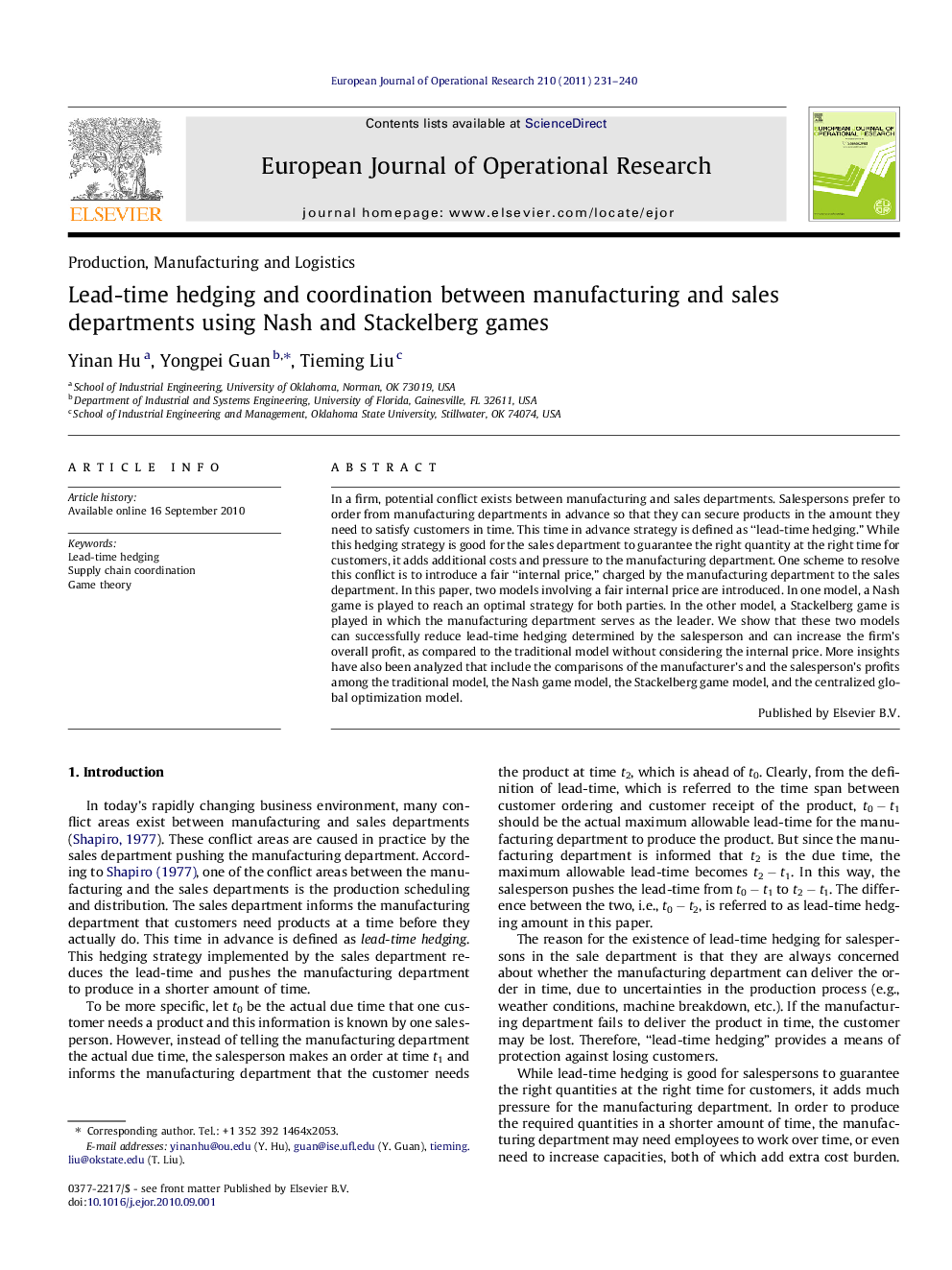| Article ID | Journal | Published Year | Pages | File Type |
|---|---|---|---|---|
| 478566 | European Journal of Operational Research | 2011 | 10 Pages |
In a firm, potential conflict exists between manufacturing and sales departments. Salespersons prefer to order from manufacturing departments in advance so that they can secure products in the amount they need to satisfy customers in time. This time in advance strategy is defined as “lead-time hedging.” While this hedging strategy is good for the sales department to guarantee the right quantity at the right time for customers, it adds additional costs and pressure to the manufacturing department. One scheme to resolve this conflict is to introduce a fair “internal price,” charged by the manufacturing department to the sales department. In this paper, two models involving a fair internal price are introduced. In one model, a Nash game is played to reach an optimal strategy for both parties. In the other model, a Stackelberg game is played in which the manufacturing department serves as the leader. We show that these two models can successfully reduce lead-time hedging determined by the salesperson and can increase the firm’s overall profit, as compared to the traditional model without considering the internal price. More insights have also been analyzed that include the comparisons of the manufacturer’s and the salesperson’s profits among the traditional model, the Nash game model, the Stackelberg game model, and the centralized global optimization model.
